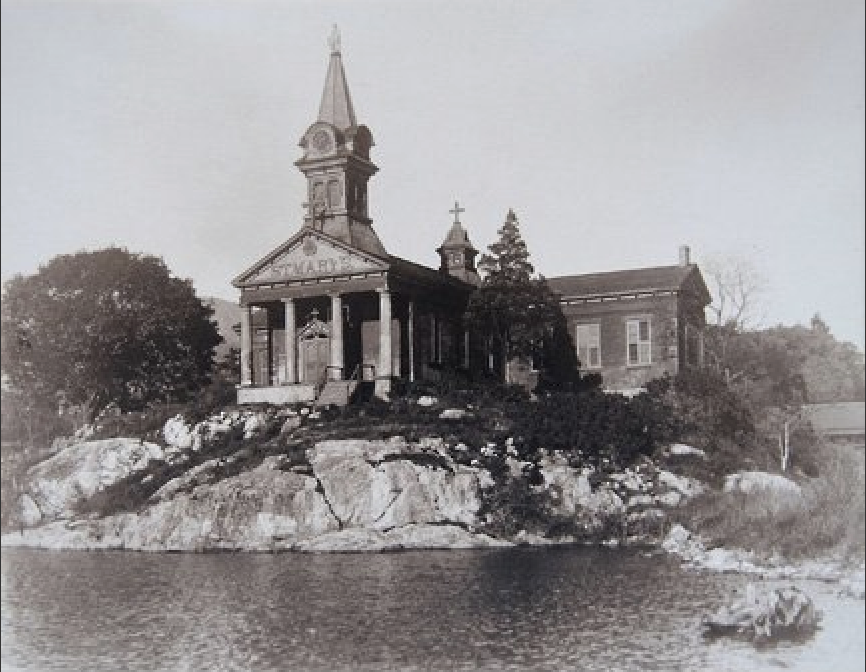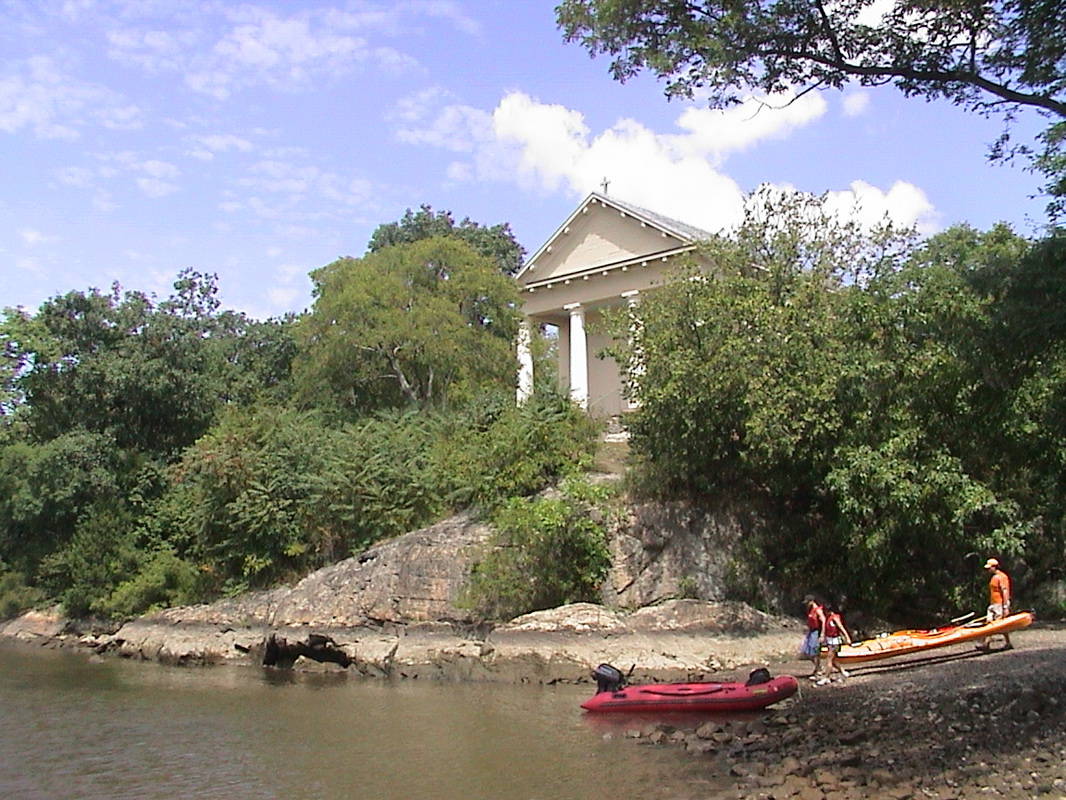Parishioners would arrive at the riverside church by boat. Today, the Restoration Chapel is an ecumenical church.The first Roman Catholic church built in New York was was St. Peter’s on Barclay Street, New York City, whose cornerstone was laid in 1785. But soon enough, the arrival of thousands of Irish immigrants pushed the diocese to build a large church, today known as Old St. Patrick’s, located in Mulberry Street. And the arrival of Irish immigrants shaped the spread of Catholicism outside the boundaries of Manhattan, too.
Between 1820 and 1860 thousands of Irish immigrants relocated to Cold Spring to work for the West Point Foundry iron factory. The factory owner, Gouverneur Kemble, decided that workers and their families needed a place of worship and donated both the land and funds to build the first Catholic Church north of Manhattan.

In 1833 Kemble hired English designer Thomas Kelah Wharton to come up with a suitable design for the chapel. Wharton, who at the time was only 19 years old, opted for Greek Revival style, which was popular for churches built in the “new world” at the time.
The traditional red brick used in much of the Hudson Valley at the time was covered in white stucco. Columns were designed according to Tuscan style, a simpler version of Doric style popularized by Athens’ Parthenon colonnades.
Works were finished in 1833 and the “Chapel of Our Lady” became a pillar of religious life for the expanding Cold Springs Catholic community. A news story from 1834 describes how believers would make their way to the newly built riverside church by boat. The story details the celebrations of a festive event, for which a band from West Point performed together with a local choir spreading music “whose notes might be heard in the recesses of the mountains.”

During the Civil War, the foundry became an important producer of weapons, which were tested on site. Accidents that happened during such arms testing sessions resulted in great damage to the chapel walls, leading then-foundry leader Captain Robert P. Parrott to pay for repair works. However, the chapel was never restored to its former glory. Restoration added Victorian elements that altered its original Greek Revival identity. And the construction of rail tracks eventually contributed to the riverside chapel’s removal from Cold Springs’ civic life. By 1906, the chapel had been abandoned and left to the forces of nature. A fire in 1927 further contributed to its seemingly unstoppable decay. But all was not lost. It was restored in 1971 when a coalition of diverse believers from different faiths, including Catholics, Jews, Presbyterian and Episcopalians, got together to fund its restoration. Actress Helen Hayes was involved too, reportedly stating: “I saw it standing forlorn and lost, in disrepair, high on its rock overlooking our beloved Hudson and I nearly wept at the sight.”

The interfaith coalition bought the property from the Archdiocese, which still formally owned it, and hired architect Walter Knight Sturges to oversee restoration work. By 1977, the chapel had reopened its doors, this time as an ecumenical site. Today, it serves as place of public worship with no religious affiliation. People from all faiths gather to this Greek Revival jewel nestled on the banks of the Hudson River for its popular Sunday Music Series. The “Restoration Chapel,” as it now known, was listed on the National Register of Historic Places, and it’s an important testament to the origins of Catholic worship in the Hudson Valley.








